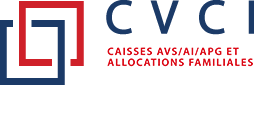Useful information
Useful Information
The Swiss social security system
The Swiss social security system has five parts:
- old-age, survivors' and invalidity insurance (the so-called three-pillar system),
- protection against the consequences of illness and accident,
- income compensation allowances in case of service and motherhood,
- unemployment insurance,
- family allowances.
These different types of insurances provide protection against social risks in the form of financial benefits (pensions, income compensation allowances, and family allowances), and pay for costs incurred through illness and accidents.
The three pillars of the old-age, survivors’ and disability insurance
The Swiss social insurance system is based on a three-pillar principle:
- state pensions made up of old-age and survivors’ insurance (OASI);
- occupational pensions made up of occupational benefit plans (LOB);
- personal pensions made up of individual investment options (3a/3b).
The first and second pillars are compulsory, while the third is voluntary.
The first pillar: the OASI
This is compulsory for all persons domiciled or gainfully employed in Switzerland. The OASI/DI pensions are meant to cover basic needs during retirement, and in the event of death or disability. The amount of the retirement pension depends on how much and for how long the person has contributed, with a maximum statutory pension per person or per couple. If no contributions are paid over any given period, a proportional reduction in the retirement pension is applied.
The second pillar: an occupational benefit plan (LOB)
This is compulsory for all salaried persons. It complements OASI coverage so that the two pillars combined allow insured persons to maintain the same standard of living as prior to retirement (about 60% of their last income). The employer transfers contributions deducted from employees’ monthly salaries to occupational benefit funds, which then pay out a monthly pension or a lump sum once the insured persons have reached retirement age. Contribution rates may vary from one company to another depending on the type of coverage provided. The employer’s contribution is at least equal to their employee’s contribution, and it is often greater.
The third pillar: 3a/3b
This is voluntary and individual. Any person who wishes to have additional revenue to improve their standard of living after retirement can constitute their own individual occupational benefit plan by means of a third pillar 3a (linked) or 3b(unlimited). Third pillar pension assets can be accumulated through a bank account, banking products or an insurance company. The payments are tax deductible up to a certain statutory limit. In addition, the income earned is also tax deductible and free from withholding tax.
The Federal Social Insurance Office (FSIO)
The FSIO controls the Confederation’s social insurance system and oversees its effective functioning and ongoing adjustment. FSIO is also the competent federal authority in matters relating to family allowance, youth and inter-generational relations, as well as in general questions of social policy.
Legal provisions
Provisions in force relating to social insurance in Switzerland can be consulted through the classified compilation of the legislation of the canton of Vaud.

